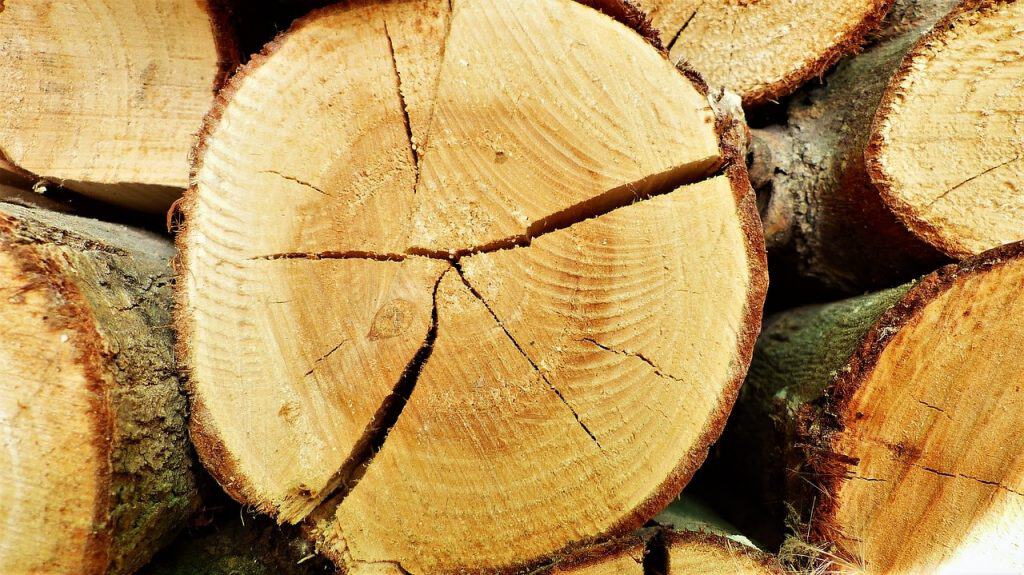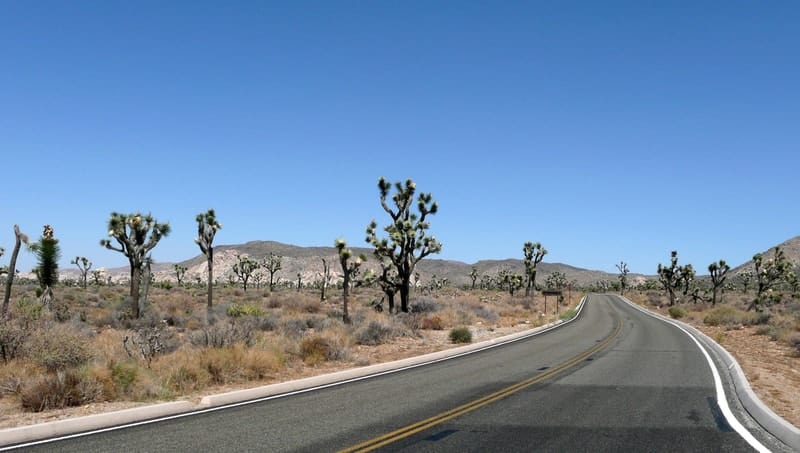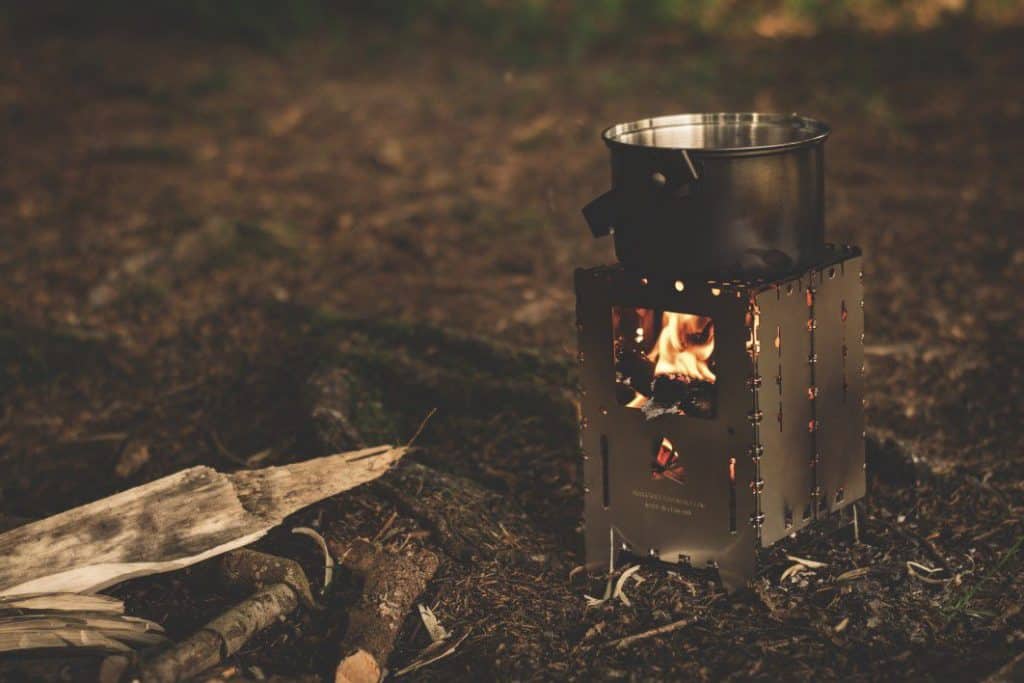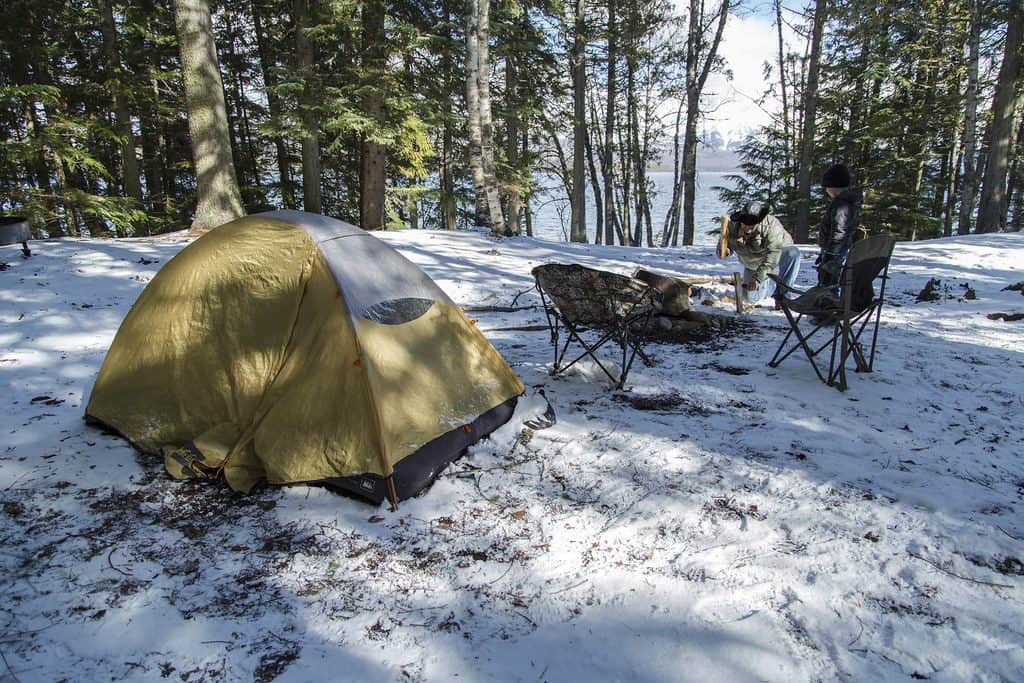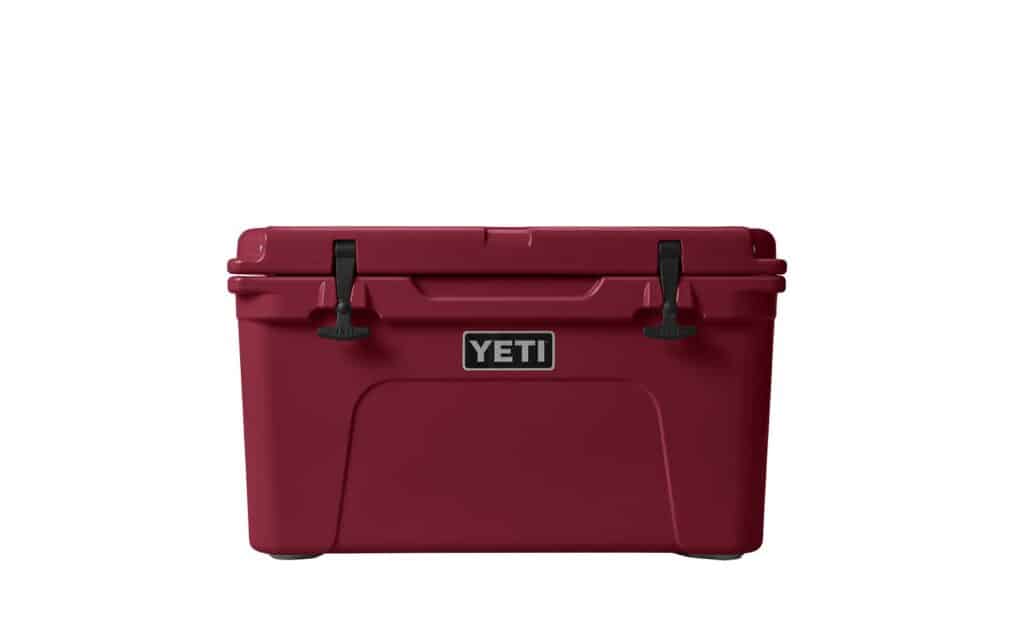I was browsing the web when it stumbled me, I had no idea what type of tent I should buy.
I decided to do a lot of research and I’ve created a very helpful guide so you don’t have to go through the struggles I went through when buying a tent.
Single wall tents are lighter and cheaper, which makes them great for backpacking. Double-wall tents are stronger and suited for harsher climates, which makes them great for longer camping trips. Let’s find out which one you should get.
Differences between single-wall and double-wall tents
Single wall and double wall tents (also known as single layer and double layer tents) are constructed differently, which makes for some pretty significant differences.
Single wall tents only have one layer which is made up of nylon. This layer of nylon acts both as a wall and a rainfly. A rainfly is meant for keeping the rain out of your tent.
While single wall tents only have one layer, a double wall has two layers. There is a separate inner wall and rainfly, unlike the single wall where both of these elements are combined in one layer.
They both have their pros and cons which I’ll be sharing with you right now.
Single wall tent advantages
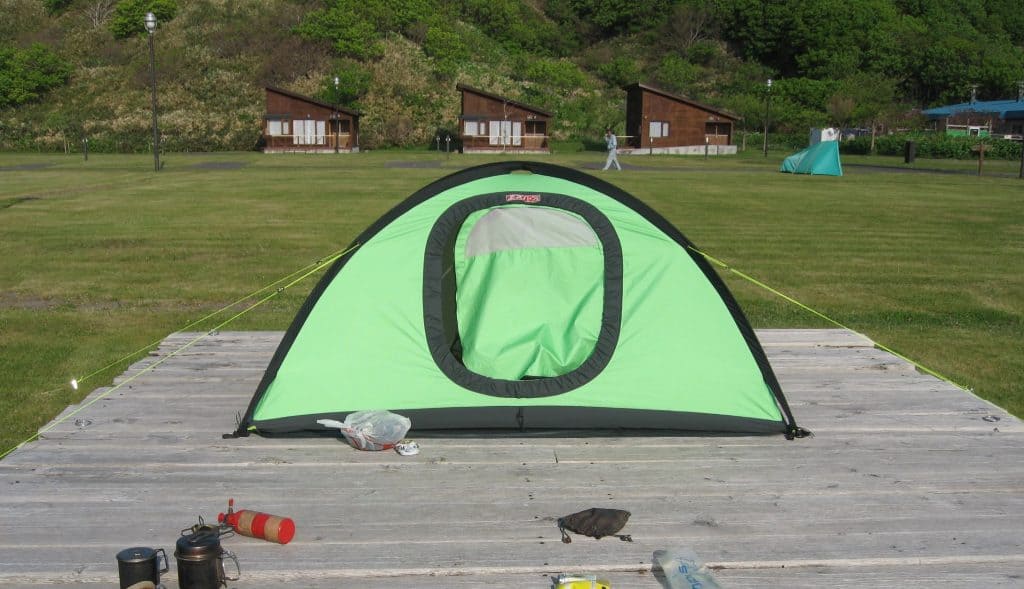
1. They are lighter
Single walls are way lighter, well, since they have only one wall. This means there will be way less fabric used, which in turn means that there will be a lot of weight reduction.
Many single wall tents also use trekking poles to be secured to the ground instead of tent poles. Trekking poles usually aren’t included though, but they are better than tent poles for many reasons. Trekking poles are usually lighter and can also be used for hiking and backpacking.
Even most ultralight double wall tents aren’t as light as single wall tents, which is why backpackers love them so much.
2. They pack easily
Single wall tents are not only lighter, but they also have a smaller volume. This means that they can fit inside many small spaces.
Since they don’t take up much volume, they will be perfect for backpacking. The smaller volume will let you store more things that are essential, like water and food. I mean, who doesn’t like having more food?
3. They are cheaper
Single walls are perfect if you are on a budget and don’t want to throw hundreds of more dollars for a tent. This is why many beginners start off with a single wall tent.
The reason they are cheaper is that they use less material, the same reason they are lighter.
Although most single walls are cheaper, there can be some that are more expensive than double walls depending on the fabric used. Single walls that use Dyneema fabric are very expensive and I would recommend buying a double wall instead.
4. Can be pitched anywhere
Since single walls are smaller, they can be pitched almost anywhere you’d like.
This is great if your campsite is very small or tight since a double wall tent would never be able to fit. This is another reason why they are great for backpacking because finding a good spot for a double wall tent can take a lot more effort.
5. Better for short trips
They are generally preferred for shorter camping and backpacking trips since they are weaker (I will mention this again in a bit). You should not get a single wall (unless it’s extremely high quality) if you plan on camping or backpacking for over 3 days.
This also makes them a great choice for car camping! I definitely prefer my single wall over my double wall when I go car camping.
Single wall tent disadvantages
1. Condensation is your enemy
Oh boy, let me tell you about condensation!
Did you know that the average human will exhale over 100 liters of water a night?
Since there is only one wall meant for insulating and keeping the rain out, this means there is no way condensation inside your tent can escape. All the moisture you breathe out will be trapped in your tent.
This means you will usually wake up to a coat of moisture on your walls in the morning. This is why you should not take single walls in wet climates (more on that later) since you could wake up with puddles in your tent!
Since there are venting issues, I suggest opening your tent often to let out the condensation. Bringing a cloth or a bandana to wipe the walls down is necessary. You do not want to get you and your items soaked, trust me!
2. They are weak
Single walls are extremely weak compared to double walls since there is no frame to support the tent.
Do not buy or take a single wall if you are planning on going to an area with heavy winds. Heavy winds will usually collapse your tent and even cause your trekking poles to tear out of the ground! This means you will need to set up your tent again.
Also, if your tent is unaccompanied, it could fly away if the wind gets strong enough. Trust me, you wouldn’t want to be tent-less in the wilderness.
3. They stretch
Nylon will sag and stretch when exposed to moisture. This isn’t a problem on a double wall tent since the nylon layer is on top of the inner wall, but this is a big problem on a single wall tent.
The tent will stretch when exposed to heavy rain, which will get your walls wet. Anything that touches your walls will get wet, including you! You do not want to wake up with a wet sleeping bag.
4. Only good for dry weather
If you camp in a single wall tent where there is high humidity, you will almost always wake up with condensation everywhere.
You also have to make sure you are not setting your tent up on any grass or in a meadow. This will create a greenhouse effect in your tent and will absolutely get you soaked.
Single walls do keep in heat better, that is, until you have to keep opening it up to let out condensation. This is why I will never go camping with a single wall tent during the winter or in humid weather.
Double wall tent advantages
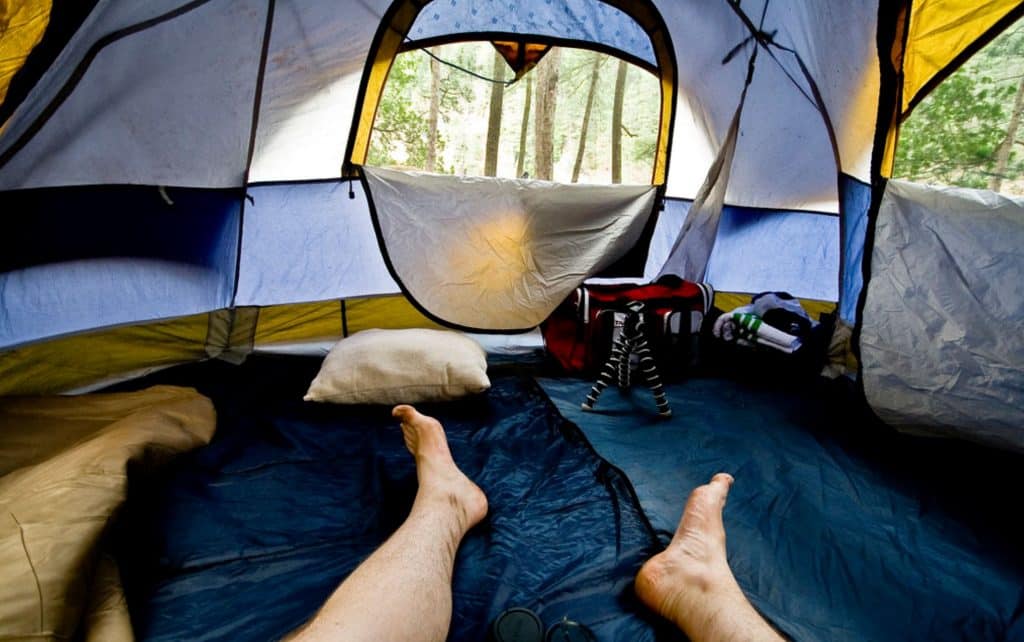
1. Easy to setup
Unlike single wall tents, they will come with tent poles. This means that you will not have to buy anything like trekking poles, which you will need to do with single walls.
Almost every double layer tent is free-standing, which means they do not need stakes to stay upright. This makes them great for pitching in bad weather or heavy wind, unlike single walls.
Although they are more convenient for setting up, it might be a little slower than a single wall. This is because putting the tent poles will take a bit more extra time, which I think is totally worth it. What will you do with an extra minute or two anyway, am I right?
2. Keeps you dry
Since there is a rainfly over the interior wall, the condensation will go on the outside of your tent. The moisture will go through the interior wall and will instead go on the rainfly, which means you will be nice and dry all the time.
I’d suggest you get a double wall that comes with a bathtub floor. It might be a little more expensive, but it is definitely worth the cost. A bathtub floor will prevent any groundwater from seeping into the tent.
If your tent doesn’t come with a bathtub floor, you can always buy one seperately!
3. They are stronger
A double wall is a must if you are going to be going camping or backpacking in bad weather conditions. The self-standing design and tent poles will keep it from collapsing, unlike a single wall that can regularly collapse.
The double wall tent construction will not only make it perfect for bad weather conditions, it’ll also make it perfect if you plan to camp in windy areas.
4. Suitable for more climates
You can camp in rainy and humid environments without worry about condensation or getting wet, which is something you will always be worrying about in a single wall tent.
It is also great for camping in the summer since there is more ventilation during the night and less condensation. Single wall tents trap a lot of heat inside since they have a lot of condensation!
Single walls are a little bit better at retaining heat, but as I mentioned above, you will need to keep venting them out. This will make them lose a lot of heat, which is why I always use double-wall tents during the winter.
5. They come with vestibules
Almost all double wall tents come with a tent vestibule, which is extremely convenient in windy or rainy weather.
A tent vestibule is like a porch on the outside your tent that shields you from wind and rain, which allows for storing extra items and cooking outside.
Vestibules can always be bought separately if your tent doesn’t have one, just keep in mind that they do add a little bit of weight to your load.
Double wall tent disadvantages
1. They’re expensive
High-quality double wall tents tend to be over $300, which can be pricey for a lot of people on a budget. Generally speaking, the lighter a double wall tent is, the more expensive it’ll be.
Double wall tents do require more material and are usually made with more durable fabric, which is why they tend to cost so much.
2. They are heavy
Almost all double wall tents are heavier than single wall tents, which is why many backpackers avoid them. They also tend to be heavier than hammocks and tarps.
There are ultralight double wall tents that can be as light as single wall tents, but as I mentioned above, they are very expensive. They are a must though if you are backpacking in extreme weather or wind.
3. Comes with tent poles
Having tent poles included is actually a good thing, the problem is that they can be very heavy and take up lots of space.
Single wall tents can use trekking poles, and most trekking poles (especially carbon trekking poles) will be lighter than the tent poles that come with double wall tents.
You also must be careful when storing tent poles since they can puncture holes.
Which one should you pick?
If you are on a tight budget and planning on camping or backpacking in dry climates, I’d definitely use a single wall tent. If you don’t have a tight budget and want to have the convenience of camping wherever you should opt-in for a double wall tent.
You can find my favorite double wall tent on Amazon.com for around $400.
Here is an Amazon link to my go-to single wall tent for around $140.
It’s honestly your choice in the end. I own a single wall tent for backpacking and a double wall tent for long camping trips. Thank you for reading and I hope you found my article useful!
Sean is an accomplished backpacker with over 10 years of experience exploring the great outdoors. He has a passion for hiking, camping and off-grid living.

